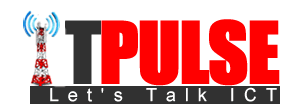Building something meaningful in tech once required deep technical skills, significant funding, and a developer-heavy team. Today, that’s no longer the case.
We’re living through a convergence of powerful technologies – AI, Web3, automation, and no-code – rapidly lowering the barriers to entry for innovation. You no longer need to be a software engineer to build, launch, and scale digital products. You need curiosity, strategic thinking, and the right tools.
As someone who studied Computer Science but built a career in tech without writing a single line of production code, I see this shift not as a threat but a massive opportunity.
AI: The Smart Layer for Everything
AI has evolved beyond buzzword status. From customer service to product discovery, content generation to fraud detection, it’s become the invisible co-pilot in many of today’s most successful digital products.
AI enables faster research, more intelligent targeting, and automated personalisation at scale for a product marketing professional like me. You can test positioning, optimise messaging, and surface insights in minutes, which used to take days.
But more importantly, AI is changing how users interact with products. It’s making interfaces more conversational, supporting more intuitive, and making experiences more adaptive. It’s not just about building faster; it’s about creating smarter.
Web3 raises better questions.
If AI is about intelligence, Web3 is about control. At its core, Web3 challenges the traditional structure of the internet by giving users more ownership of data, identity, and value.
I’m not drawn to crypto or decentralisation just for the technology. What interests me is what Web3 represents. It challenges our thinking about ownership, value, trust, and power.
Web3 suggests that people can more easily control their identity, money, and digital lives. This shift encourages us to build products people participate in, not just use.
Automations: Scaling without Complexity
Automation is what allows small teams to operate at enterprise levels. Whether it’s onboarding flows, triggered comms, feedback loops, or data syncing between tools, automation frees people to focus on creativity and strategy, not repetitive tasks.
I’ve used automation to increase conversions in a B2B product. It wasn’t complex. Just simple flows that responded to user behaviour, onboarding steps that made sense, and follow-ups that felt natural.
The result? More users were onboarded, and more reached the value quickly. Automation doesn’t just save time. It reduces friction, guides users, and allows teams to focus on critical work.
No-Code: The Most Underrated Revolution
If there’s one movement I wish more people paid attention to, it’s no-code. No-code tools are probably the most important shift I’ve seen in tech over the past five years. They’ve made building accessible.
You no longer have to pitch your idea or wait for a developer. If you’ve got a concept, you can test it today.
No-code is not about replacing developers. It’s about welcoming more types of thinkers into the process. The people who understand users, shape journeys, tell stories, and solve problems can build now, too.
The Future Is Cross-Functional
What’s happening right now isn’t just a wave of new tools. It’s a reset of who gets to build and what that building looks like.
The future of building is no longer reserved for technical specialists. Community leads, marketers, researchers, and designers have started building products, launching platforms, and growing companies. They didn’t become someone else. The tools finally matched how they already think.
That’s the fundamental shift. People with real ideas finally have the tools to act on them.
It’s Not About the Stack, It’s About the Vision
You don’t need to know how to build everything yourself. You don’t need to have it all figured out, but understand what’s possible. The real skill now is strategic orchestration – learning how to combine the right technologies to solve the correct problems, for the right users.
As someone who’s built and scaled across fintech, SaaS, HR tech, and Web3, often without code, I can tell you that the edge doesn’t come from technical depth alone. It comes from clarity of purpose, speed of execution, and the ability to stay human in how you build.
The future of tech isn’t about who writes the best code. It’s about who understands people, solves real problems, and continues to create.
That’s how we build what comes next.




